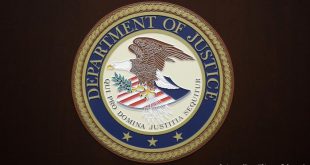For the original story and video by ABC-10’s Jerry Taylor, click here.
Driving through Michigan is about to get a little faster.
Speed limit changes on more than 1,500 miles of roads across the state have been approved by the Michigan State Police and the Michigan Department of Transportation.
Nine hundred miles of non-freeway roads will see a speed increase from 55 to 65mph, and 600 miles of freeways will soon have a maximum speed of 75mph.
MDOT Communications Representative Dan Weingarten says there’s a lot of work that needs to be done before the speed limit increases go into effect.
“Beyond putting up the new signs for the new speed limits, changing passing zones signs where appropriate, changing paving markings to match that; it’s going to take a while longer to get the speeds posted on all of the 900 miles of non-freeway roadways, so we’re looking into the fall for that work,” said Weingarten. “Everything should be completed in November sometime.”
The changes come on the heels of a joint study by MDOT and the MSP that identified the safest roads to increase speeds.
In January, Governor Rick Snyder signed off on a series of bills that ordered the engineering and safety study.
Until the new speed limit signs are installed, drivers must abide by the posted speeds.
MDOT and Michigan State Police announce freeway and non-freeway corridors selected for speed limit increases
April 26, 2017 — In accordance with new state law, the Michigan Department of Transportation (MDOT) and Michigan State Police (MSP) have identified 900 miles of non-freeway state highways for speed limit increases to 65 mph, and 600 miles of freeway for speed limit increases to 75 mph. Select freeway routes will have increased speed limits posted beginning May 1.
Public Act 445, passed by the state Legislature in late 2016, tasked the two agencies with increasing speed limits on some state highways and freeways based on 85th-percentile speeds (the speed at or below which 85 percent of traffic is moving) and the results of engineering and safety studies. The law requires that these modified speed limits be in place prior to Jan. 5, 2018.
“The corridors identified by MDOT and MSP were selected not only because studies indicated most drivers were already driving at those increased speeds, but also because their design and safety features were best suited to these speed limits,” said State Transportation Director Kirk T. Steudle. “We reviewed design speeds, crash patterns, number of access points, traffic volumes and continuity of these corridors, and chose them to minimize necessary improvements for higher speed limits.”
“The engineering and safety studies conducted utilized the 85th-percentile speed, which is a national scientifically proven method to determine and establish safe speed limits,” stated Col. Kriste Kibbey Etue, director of the MSP. “Troopers and motor carrier officers do, and will continue to, aggressively enforce all posted speed limits to ensure compliance by the motoring public.”
MDOT will begin posting new speed limits beginning May 1, starting with three freeway routes:
- I-75 – Bay City to US-23 in Mackinaw City (Bay, Arenac, Ogemaw, Roscommon, Crawford, Otsego, Cheboygan, and Emmet counties), and St. Ignace to Sault Ste. Marie (Mackinac and Chippewa counties)
- US-127 – I-69 to the end of the freeway at St. Johns (Clinton County), and the beginning of the freeway at Ithaca to I-75 (Gratiot, Isabella, Clare, Roscommon, and Crawford counties)
- US-131 – M-57 to the end of the freeway north of Manton (Kent, Montcalm, Mecosta, Osceola, and Wexford counties)
New speed limits will be posted on those three routes by mid-May. MDOT also will begin installing sign overlays reflecting the new 65 mph speed limit for trucks and buses on state roadways with posted speed limits of 65 mph or greater. The new maximum speed limit for trucks and buses was another change prompted by Public Act 445.
MDOT and MSP are finalizing the administrative processes and signing traffic control orders to implement increased speed limits on the remaining freeway and non-freeway corridors. New speed limits will be posted on all of the selected freeway and non-freeway routes prior to mid-November.
The other corridors reviewed and selected for increased speed limits are:
- Limited-access freeways
- I-69 – I-69 Business Route (Saginaw Highway) to Swartz Creek (Clinton, Shiawassee, and Genesee counties)
- I-69 – From the Genesee/Lapeer county line to I-94 (Genesee, Lapeer, and St. Clair counties)
- US-10 – M-115 to I-75 (Clare, Isabella, Midland, and Bay counties)
- US-31 – South Oceana County line to US-10 (Oceana and Mason counties)
Non-freeways
- US-2 – Wakefield to Iron River (Gogebic and Iron counties)
- US-2 – St. Ignace to Rapid River (Mackinac, Schoolcraft, and Delta counties)
- US-23 – East of Cheboygan to east of M-65 (Cheboygan and Presque Isle counties)
- US-45 – North of US-2 to M-26 (Gogebic and Ontonagon counties)
- M-28 – East of Harvey to Christmas (Marquette and Alger counties)
- M-28 – Munising to I-75 (Alger, Schoolcraft, Luce, and Chippewa counties)
- M-28 – Wakefield to US-41 (Gogebic, Ontonagon, Houghton, and Baraga counties)
- M-32 – Atlanta to Alpena (Montmorency and Alpena counties)
- M-33 – Atlanta to Onaway (Montmorency and Presque Isle counties)
- M-37 – Mesick to Wolf Lake (Wexford and Lake counties)
- M-55 – US-31 to Cadillac West (Manistee and Wexford counties)
- M-64 – M-28 to Old M-107 (Ontonagon County)
- M-65 – US-23 to M-32 west junction (Arenac, Iosco, Alcona, and Alpena counties)
- M-65 – M-32 east junction to US-23 (Alpena and Presque Isle counties)
- M-68 – I-75 to US-23 (Cheboygan and Presque Isle counties)
- M-72 – Grayling to Mio (Crawford and Oscoda counties)
- M-72 – Fairview to M-65 north junction (Oscoda and Alcona counties)
- M-72 – M-65 south junction to Harrisville (Alcona County)
- M-77 – US-2 to M-28 (Schoolcraft County)
- M-115 – Benzonia to Mesick (Benzie and Wexford counties)
- M-123 – I-75 to Paradise (Mackinac and Chippewa counties)
- M-231 – M-45 to M-104 (Ottawa County)
While implementing these modified speed limits, MDOT also will install advisory speed and curve warning signs, shorten passing zones, move signs, and change pavement markings where necessary. Reduced speed limits in communities along these corridors will remain in place.
More information on these speed limit increases, a map of the routes affected, links to the applicable legislation, and a list of frequently asked questions are posted at www.michigan.gov/speedlimits.
 Keweenaw Report Your Source for Local News and Sports
Keweenaw Report Your Source for Local News and Sports





